 By Mark Warburton, Ivory Egg.
By Mark Warburton, Ivory Egg.
Active metering is key to reducing demand on natural resources and reducing utility bills. By including metering and a method to easily view data – for example, on a smartphone as part of a KNX installation – your customer will be able to review both live and historical water, electricity and gas consumption. Having this information easily to hand leads to increased awareness and has proven to be key in reducing energy usage. Indeed visibility encourages energy-efficient behaviour by the whole family.
Tracking energy consumption as changes are made to the home reinforces and encourages further energy-saving. For example, by reducing the temperature throughout the house by one degree, around 30% may be saved on the gas or oil bill. Without being able to see this however, the occupants won’t know if the changes that they have made really have helped, but once they can see the consumption levels dropping before their eyes, they can fine-tune comfort versus efficiency to find the compromise that suits them.

The same is true of other systems in the home. Dimming the maximum level of lighting by 10% will be hardly noticeable to the occupants, but may lead to significant electricity savings. KNX metering and visualisation makes this easy, so it is worth suggesting this to your clients.
Being able to compare data from different billing periods can quickly flag up problems in the home, for example a leaky toilet may lead to a spike in water consumption. Normally, this wouldn’t be picked up until the next billing period, if at all. With the ability to easily compare past consumption with live data, the occupant will be aware of the problem much earlier and can resolve it before it starts to cost them and the planet.
Options for Metering with KNX
• Primary Metering
Whether gas, water or electric, most meters now have an output to provide integration, so this is the simplest and most cost-effective method of getting metering values onto the bus.
• Pulse outputs (S0)
This is either a physical contact closure or a flashing IR light which will pulse once every time a unit is used. Within the parameters of the KNX interface, it is possible to scale this input to make the data relevant, and with on-board counters and offsets, the meter’s consumption can be tracked with little complication.
A perfect example is the Arcus two-channel module as shown below, that counts S0 pulses S0 (S-zero) is a hardware interface for measuring pulses and is typically used with water, gas, electricity and heat meters.
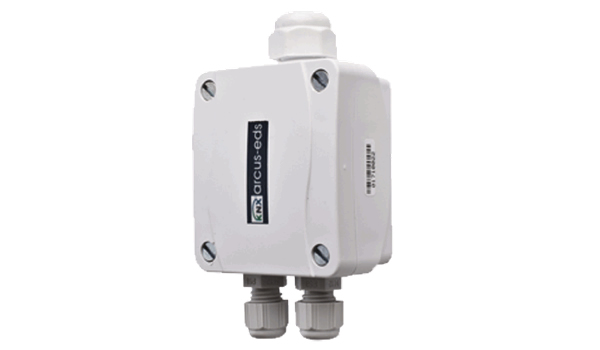
• M-bus
As incoming services are often combined, it is possible to connect different meters to the same device. M-bus is a standardised protocol allowing multiple meters (slaves) to be connected to a master gateway, which is then able to give a read out of the consumption data. This is a very simple method of communication with multiple meters.
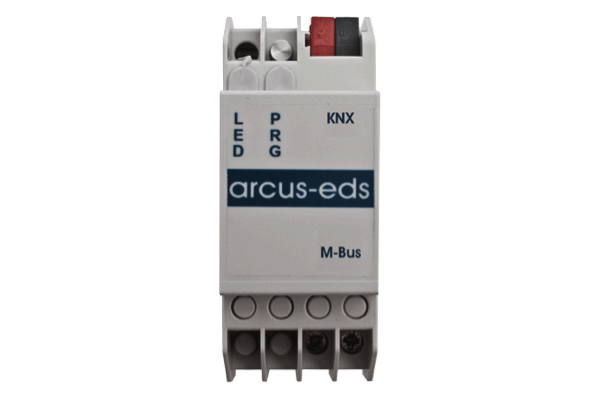
• Electricity Meter Interfaces
The above interfaces are the best ways of integrating both gas and water meters, but for electricity, there are a few more options. ABB for example, has a KNX meter interface that allows a high level of integration between its extensive range of meters. This allows the KNX system to access data such as the line voltages and currents, power factor, frequency and phase angle, along with the standard active energy readings.
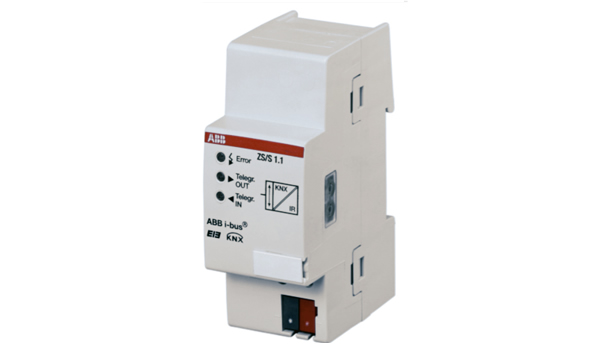
Whilst adding a secondary meter may seem costly, it is often much more cost-effective than starting a drawn-out conversation with the utility supplier. With split-core current transformers, there is no need to re-wire the incoming supply.
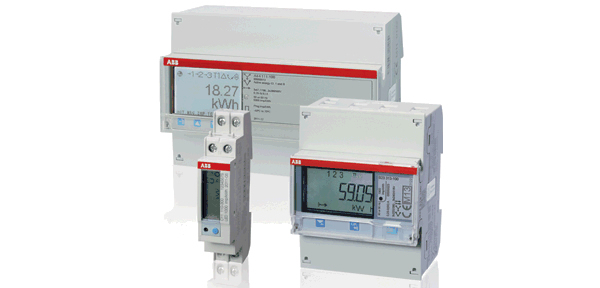
Zennio has a very simple KNX device, the KES, which allows for the energy consumption of either three individual circuits to be metered or a three-phase supply. This product is very cost-effective given its functionality, and allows for even the most basic installation to have KNX metering.
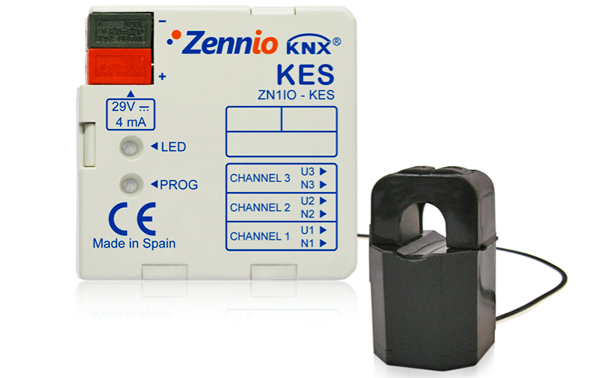
The KES also works very well with the Zennio z41 display that allows for graphing and visualisation of the energy consumption as well as being a room controller.
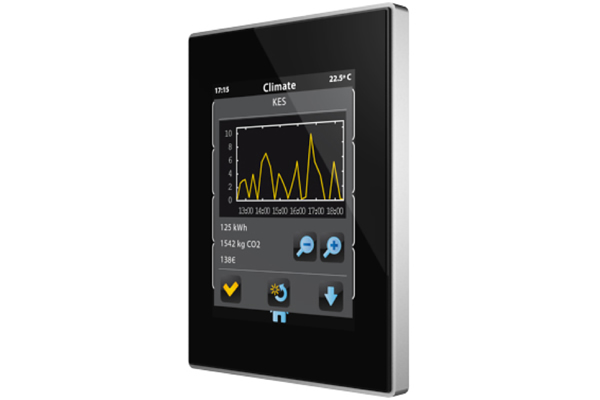
It is also possible to provide a more accurate reading on individual outgoing circuits, and we are starting to see KNX relay modules with integrated current detection such as the Theben RMG 4 I series. This is very useful if load shedding is required, as an energy profile for the installation can be established which is then used to reduce power consumption when a backup generator is required for example.
The ABB energy actuator takes this to the next level with 3 x 20 AX outputs, each providing a wide range of electrical variables including the active energy, current and voltage levels.
Visualisation
So now that we have a lot of metering values on the bus, we need to present this in a simple way to the end user, whilst also ensuring that there is a logic engine to enable you to make full use of the data being provided.
Be it a residential solution such as the Gira HomeServer or the ABB ComfortTouch, or a more commercial solution such as those from the likes of NETxAutomation or KNXserver, there are plenty of options available.
Furthermore, with Light+Building just around the corner, we expect to see a lot of new visualisation solutions specifically for metering, as this is one of the fastest developing aspects of the KNX System.

Conclusion
With the cost of the above products minimal in comparison to the rest of a KNX installation, it should be possible for every KNX project to include a metering solution. This will not only benefit the end user, but will provide a wealth of information for the KNX partner to ensure that they have installed a system that is working as efficiently as possible.
Mark Warburton is the Sales Manager for Ivory Egg (UK) Ltd, a supplier of leading KNX products and provider of KNX training courses. Mark is also a regular contributor to KNXtoday magazine.
You are welcome to comment on this article. See below.











